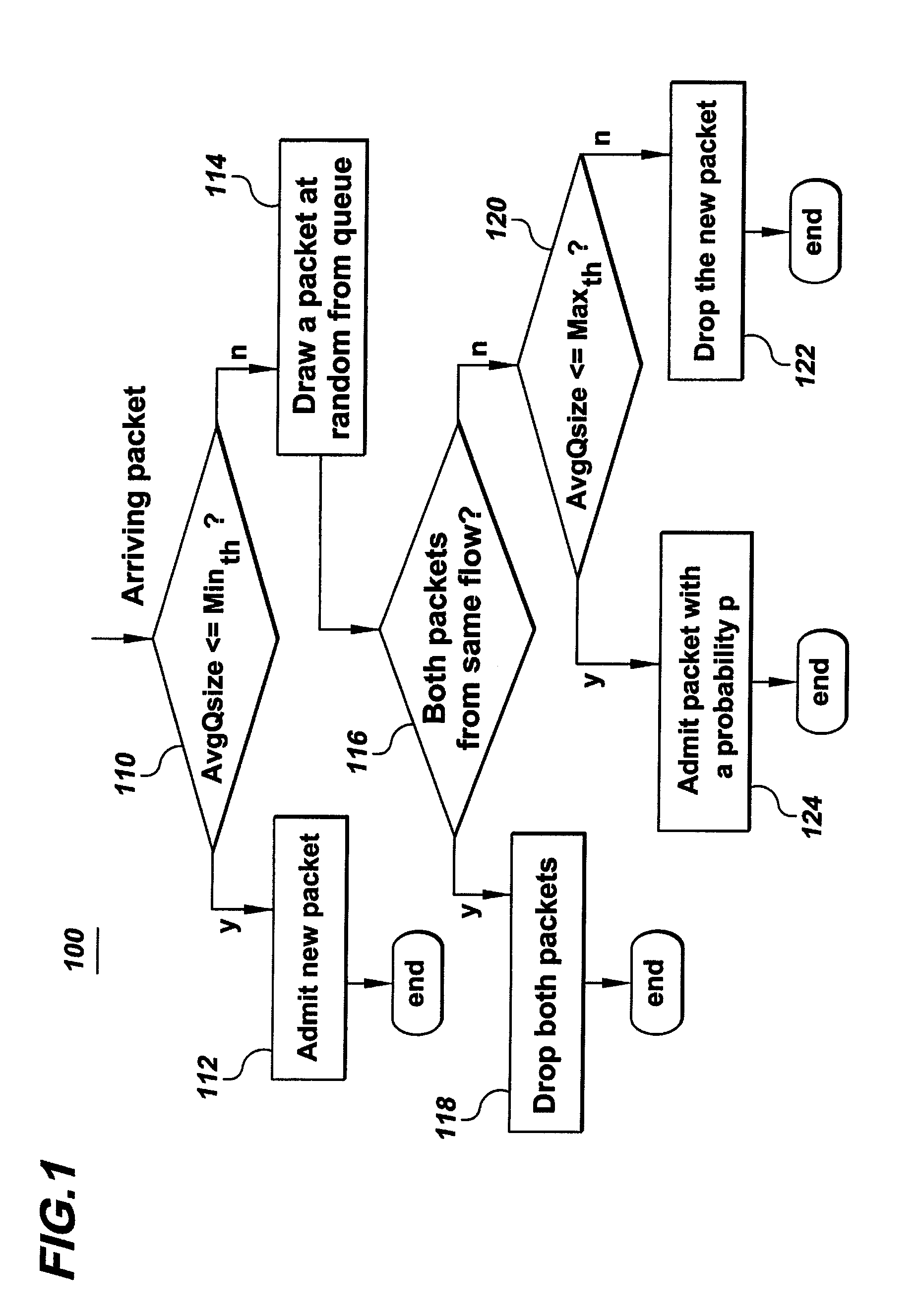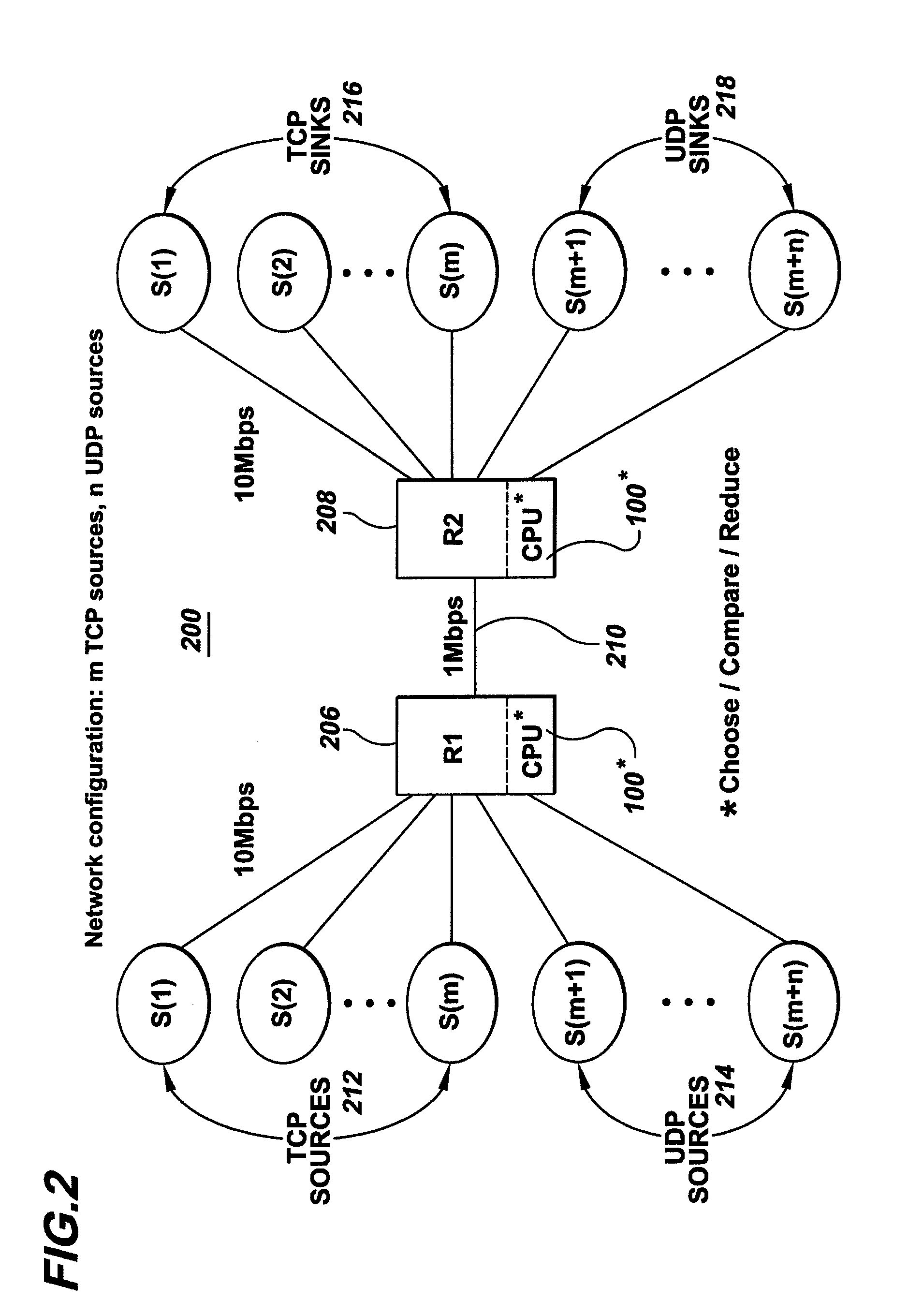Active queue management toward fair bandwidth allocation
a queue management and bandwidth allocation technology, applied in the field of packettype data communication protocols, can solve the problems of increasing the overhead of implementation, not including, and aggressively consuming more bandwidth by applications, and achieve the effect of reducing the overhead of implementation
- Summary
- Abstract
- Description
- Claims
- Application Information
AI Technical Summary
Benefits of technology
Problems solved by technology
Method used
Image
Examples
Embodiment Construction
[0018]The present invention is believed to be applicable to a variety of systems and methods that route identification-bearing data sets (or “packets”) in a communication environment that is susceptible to unbalanced bandwidth allocation. In connection with the Internet, for example, servers employ routers to distribute identification-bearing packets to a variety of remotely-located nodes. Each router receives and sends the packets through one or more first-in-first-out buffer / memory arrangements (“FIFOs”). Unbalanced bandwidth allocation can occur in a number of ways including, for example, by the router receiving and attempting to reply to a disproportionate number of packets of the same identification. An appreciation of the invention may be ascertained through the following discussion in the context of such example applications, in which those skilled in the art will appreciate that reference to a “packet” is not necessarily limited to a data set having a size that is fixed.
[001...
PUM
 Login to View More
Login to View More Abstract
Description
Claims
Application Information
 Login to View More
Login to View More - R&D
- Intellectual Property
- Life Sciences
- Materials
- Tech Scout
- Unparalleled Data Quality
- Higher Quality Content
- 60% Fewer Hallucinations
Browse by: Latest US Patents, China's latest patents, Technical Efficacy Thesaurus, Application Domain, Technology Topic, Popular Technical Reports.
© 2025 PatSnap. All rights reserved.Legal|Privacy policy|Modern Slavery Act Transparency Statement|Sitemap|About US| Contact US: help@patsnap.com



